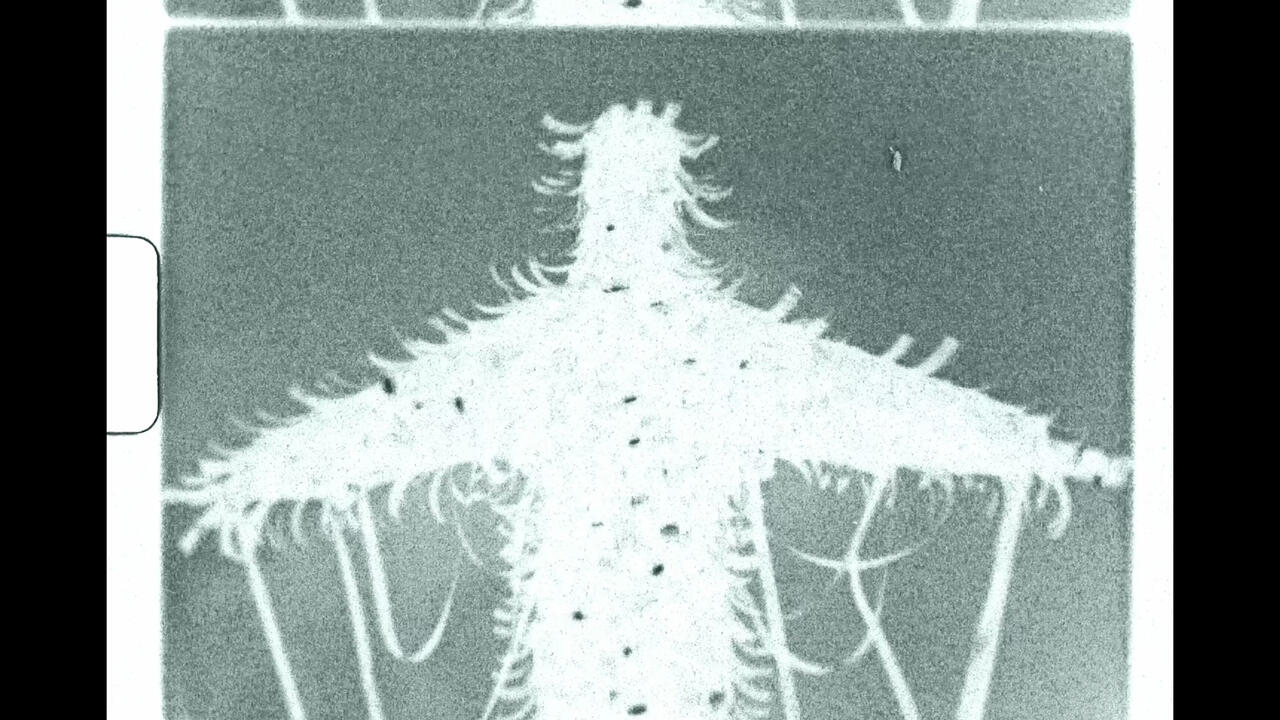Bob Gramsma
The entrance foyer and strikingly rounded rear wall of the ground floor remind the visitor that the space used to be a little cinema. Bob Gramsma built the cinema's history into this sequence of sculptural interventions.
The gallery is concealed from the street by mainly white windowpanes - one, however, is green whilst the other has been rebuilt into a frame-like opening. At the entrance, two showcases have been smeared with hand cream; they now face each other like two rounded, semi-transparent glass bodies. Beyond the glass door is a royal blue curtain, trailing in a gleaming trough of water. It looks solemn and strange, as if it's hiding phantasmagoria it will never rise to reveal.
Soft, melancholy sounds are audible as soon as you enter: the soundtrack to a video of an endless car journey along dark carriageways at night. Two gleaming white lines seem to look for each other, drifting apart, then coming together again. In the early 70s, art journeys travelled through actual space, but this 90s drift is a foray into a virtually infinite interior, infused with just a trace of longing. Young Zürich artists keep offering us these aimless journeys - Pipilotti Rist's scudding clouds, or Ugo Rondinone's dense fog and driving snow - but Bob Gramsma breaks the mood; refusing to allow the viewer to sink into dreams, he coats the screen to make it look like a glittering carriageway.
The stage, auditorium and projection screen are one; at the rounded end of the space, the floor is suddenly transformed into the outline of a mountain panorama. A beautifully artificial light shines up from below, like an alpenglow in synthetic colours. Sunken monitors work as indirect light sources, so the images remain withdrawn. A group of clattering film projectors, without films, provide flickering illumination for a sharply delineated line of brightly coloured racing skiers. Two screens redirect the image into the window, and people peering in from the street look into the empty light of the film projectors and discover that they are part of the show themselves.
At the back of the gallery, three lights placed next to each other cast their glow on the wall: a wall-scheme for perspective space - like a bow-tie to go with a dinner jacket - is created from the distorted fields of light. Opposite, a large-format photograph shows a pedestrian ramp coming out of a shopping centre or an underground car park, somewhere or other. A small architectural fragment cast in bronze echoes the model of a stage. The viewer is reflected again, fleetingly and out of focus, in a small polished area on the back wall of the interior.
Gramsma's humour transforms his work into something more complex than the friendly illustrations of post-melancholy life that seem to be so popular at the moment. His work alternates between media, conveying a condition that is difficult to grasp: an existence without a fixed basis, but also without irony. 'Drift', the title of the exhibition, refers to an unspecified movement beyond the real space. Exterior and interior constantly run into each other, but against the randomness of simply floating, Gramsma attempts to make instability itself more precise.















